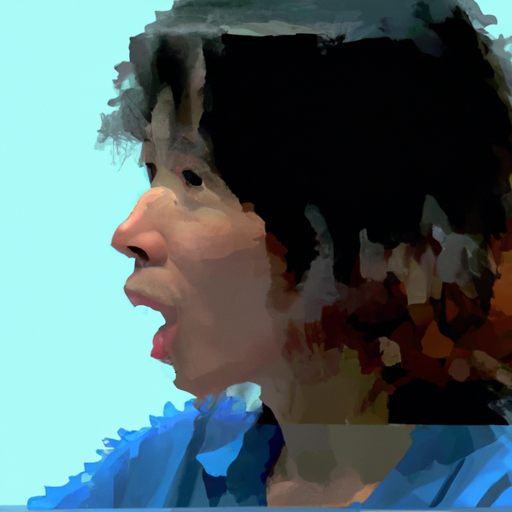
-
Table of Contents
The Use of Illustration in Social Impact Campaigns

Illustration has long been a powerful tool for communication and storytelling. From children’s books to advertising, illustrations have the ability to capture attention, evoke emotions, and convey complex ideas in a visually compelling way. In recent years, there has been a growing trend of using illustration in social impact campaigns to raise awareness, inspire action, and drive positive change. This article explores the role of illustration in social impact campaigns and examines its effectiveness in creating meaningful impact.
The Power of Visual Communication
Visual communication is a universal language that transcends barriers of language, culture, and literacy. It has the ability to convey messages quickly and effectively, making it an ideal medium for social impact campaigns. Illustrations, in particular, have the power to simplify complex issues, evoke empathy, and engage audiences on an emotional level.
One of the key advantages of using illustrations in social impact campaigns is their versatility. Illustrations can be created in various styles, from realistic to abstract, allowing campaign creators to tailor the visuals to the specific message and target audience. This flexibility enables illustrations to resonate with diverse audiences and make a lasting impact.
Creating Emotional Connections
Illustrations have a unique ability to evoke emotions and create a sense of empathy in viewers. By depicting real-life situations or using metaphors, illustrations can help audiences connect with the issues being addressed in social impact campaigns. For example, an illustration depicting a child holding a broken pencil can symbolize the lack of access to education in underprivileged communities.
Case Study: The “Save the Bees” Campaign
In 2018, Greenpeace launched a social impact campaign called “Save the Bees” to raise awareness about the decline of bee populations and the importance of pollinators for the environment. The campaign featured a series of illustrations depicting bees in various scenarios, such as struggling to find flowers or being affected by pesticides.
The illustrations used in the campaign were vibrant, detailed, and visually appealing. They captured the attention of viewers and effectively conveyed the message of the campaign. By humanizing bees and showing their struggles, the illustrations created an emotional connection with the audience, inspiring them to take action to protect these vital creatures.
Breaking Down Complex Issues
Social impact campaigns often tackle complex issues such as climate change, inequality, or mental health. These issues can be overwhelming and difficult to comprehend for many people. Illustrations can play a crucial role in simplifying these complex issues and making them more accessible to a wider audience.
By using visual metaphors, infographics, or step-by-step illustrations, complex concepts can be broken down into digestible and engaging visuals. This not only helps in raising awareness but also empowers individuals to understand the issues and take action.
Case Study: The “Me Too” Movement
The “Me Too” movement, which gained momentum in 2017, aimed to raise awareness about sexual harassment and assault. The movement used illustrations to convey the experiences of survivors and shed light on the prevalence of these issues.
Illustrations were shared on social media platforms, depicting powerful messages such as a broken chain symbolizing the breaking of silence or a clenched fist representing solidarity. These illustrations helped in humanizing the movement and making it relatable to a wider audience, ultimately leading to increased awareness and support for survivors.
Engaging and Memorable Campaigns
Illustrations have the ability to capture attention and leave a lasting impression on viewers. Unlike photographs or text, illustrations can be stylized and exaggerated, making them more memorable and engaging. This makes them an effective tool for social impact campaigns aiming to create a lasting impact.
Case Study: The “Black Lives Matter” Campaign
The “Black Lives Matter” movement, which gained global attention in 2020, used illustrations to amplify its message and engage audiences. The campaign featured powerful illustrations depicting individuals of different races standing together, holding hands, or breaking chains.
These illustrations were widely shared on social media platforms, becoming symbols of unity and solidarity. By using illustrations, the campaign was able to create a visual identity that resonated with people around the world, leading to increased awareness and support for the movement.
Measuring Impact and Effectiveness
Measuring the impact and effectiveness of social impact campaigns is crucial to understanding their reach and success. While it can be challenging to quantify the impact of illustrations directly, there are several indicators that can be used to assess their effectiveness.
- Social media engagement: The number of likes, shares, and comments on social media platforms can indicate the level of engagement and resonance of the illustrations.
- Website traffic and conversions: Monitoring website traffic and conversions can provide insights into the effectiveness of illustrations in driving action and raising awareness.
- Survey feedback: Conducting surveys or collecting feedback from the target audience can help gauge the emotional impact and understanding of the illustrations.
Summary
Illustration plays a vital role in social impact campaigns by capturing attention, evoking emotions, simplifying complex issues, and creating lasting impressions. Through their versatility, illustrations can engage diverse audiences and make a meaningful impact. Case studies such as the “Save the Bees” campaign, the “Me Too” movement, and the “Black Lives Matter” campaign demonstrate the power of illustrations in raising awareness, inspiring action, and driving positive change.
As social impact campaigns continue to evolve, the use of illustration is likely to remain a powerful tool for communication and storytelling. By harnessing the visual language, campaign creators can create compelling visuals that resonate with audiences, ultimately leading to a more informed and engaged society.
